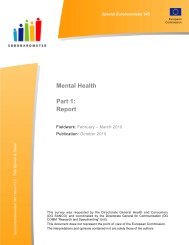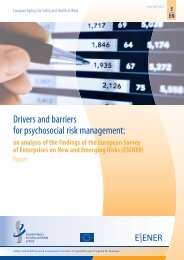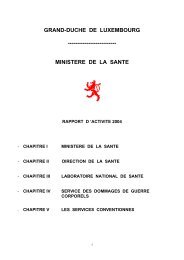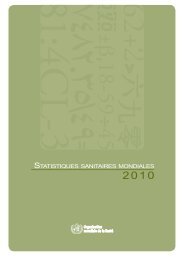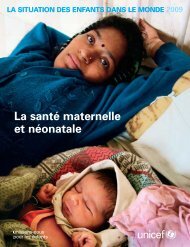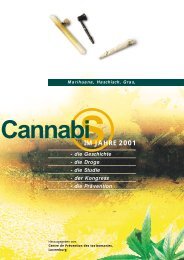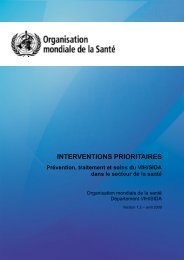Global Tuberculosis Control 2010 - Florida Department of Health
Global Tuberculosis Control 2010 - Florida Department of Health
Global Tuberculosis Control 2010 - Florida Department of Health
You also want an ePaper? Increase the reach of your titles
YUMPU automatically turns print PDFs into web optimized ePapers that Google loves.
Russian Federation<br />
Thailand<br />
Brazil<br />
South Africa<br />
China<br />
Philippines<br />
Viet Nam<br />
India<br />
Indonesia<br />
Kenya<br />
Pakistan<br />
Mozambique<br />
Nigeria<br />
Ethiopia<br />
Afghanistan<br />
UR Tanzania<br />
Cambodia<br />
Uganda<br />
Myanmar<br />
Zimbabwe<br />
Bangladesh<br />
DR Congo<br />
Internal sources<br />
Government, NTP budget<br />
(excluding loans)<br />
Government, general<br />
health-care services<br />
(excluding loans)<br />
Loans<br />
External sources<br />
Grants (excluding<br />
<strong>Global</strong> Fund)<br />
<strong>Global</strong> Fund<br />
0 10 20 30 40 50 60 70 80 90 100<br />
% <strong>of</strong> total available funding<br />
40% <strong>of</strong> available funding in India to more than 90% <strong>of</strong><br />
available funding in the Democratic Republic <strong>of</strong> the Congo<br />
().<br />
There is also considerable variation in the estimated<br />
cost per patient treated according to the DOTS strategy<br />
( ). This ranges from under US$ 100 (in<br />
Bangladesh, India, Myanmar, Pakistan and Zimbabwe)<br />
to around US$ 750 in Thailand, US$ 1000–1500 in Brazil<br />
and South Africa and more than US$ 7 500 in the<br />
Russian Federation. In most HBCs, the cost per patient<br />
treated under DOTS is around US$ 150–400. As shown<br />
in , variation in the cost per patient treated<br />
is clearly related to income levels (for example, Brazil<br />
and South Africa are upper-middle income countries,<br />
where prices for inputs such as NTP staff and hospital<br />
care are higher than in low-income countries). The<br />
major reason why the Russian Federation is an outlier<br />
is the model <strong>of</strong> care used: high costs are associated with<br />
a policy <strong>of</strong> lengthy hospitalization <strong>of</strong> TB patients within<br />
an extensive network <strong>of</strong> TB hospitals and sanatoria.<br />
A further explanation for variation in costs appears to<br />
be the scale at which treatment is provided. The countries<br />
with relatively low costs for their income level (for<br />
example, Bangladesh, China, India, Indonesia and the<br />
Philippines) are also the countries where the total numbers<br />
<strong>of</strong> patients treated are highest (as shown by the size<br />
<strong>of</strong> the circles in ). A similar pattern exists for<br />
the cost per patient successfully treated, which combines<br />
information about both costs and effectiveness (<br />
).<br />
<br />
Besides the 22 HBCs, 81 other countries have reported<br />
financial data to WHO since 2006 that allow assessment<br />
<strong>of</strong> trends in funding for TB control. Combined, these 103<br />
countries account for 96% <strong>of</strong> the world’s notified cases<br />
<strong>of</strong> TB. Funding for TB control has grown from US$ 3.9<br />
billion in 2006 to a projected US$ 4.7 billion in 2011<br />
(, ). As in HBCs, the largest share<br />
<strong>of</strong> funding is for DOTS implementation; an increasing<br />
amount is for MDR-TB. National governments account<br />
for 86% <strong>of</strong> the funding expected in 2011, followed by<br />
the <strong>Global</strong> Fund (US$ 513 million, or 11% <strong>of</strong> total funding)<br />
and then by grants from donors besides the <strong>Global</strong><br />
Fund (US$ 101 million, or 2%). Loans from development<br />
banks account for the remaining 1% <strong>of</strong> total funding. The<br />
funding gaps reported by these 103 countries amount to<br />
US$ 0.6 billion in <strong>2010</strong> and US$ 0.3 billion in 2011 (<br />
).<br />
A comparison <strong>of</strong> the funding available in the countries<br />
that reported financial data with the funding<br />
requirements set out in the <strong>Global</strong> Plan is provided, by<br />
region and for the period 2011–2015, in . 1<br />
Overall, funding falls short <strong>of</strong> the requirements <strong>of</strong> the<br />
<strong>Global</strong> Plan. The gap is approximately US$ 1 billion in<br />
2011. Given the scale-up <strong>of</strong> interventions set out in the<br />
plan, this could increase to US$ 3 billion by 2015 without<br />
intensified efforts to mobilize more resources.<br />
1<br />
This analysis is for the 22 HBCs and a subset <strong>of</strong> 85 other countries<br />
that are among the 149 countries considered in the <strong>Global</strong> Plan. The<br />
total funding available in the group <strong>of</strong> 107 countries for which data<br />
were available was adjusted upwards according to the fraction <strong>of</strong><br />
cases for which they accounted, to allow direct comparison with the<br />
group <strong>of</strong> 149 countries considered in the <strong>Global</strong> Plan. The <strong>Global</strong><br />
Plan excludes high-income countries.



